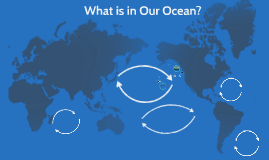3. microplastics HUGE problem
Description
Ever wondered where plastic comes from or where it goes after you have finished using it? Learn techniques used by our Ocean Pollution Research team to discover the big impact microplastics have on our environment and the animals that live here.
In our ninth series of the season we get down to the nitty gritty behind our Ocean Pollution Research. We will follow plastics up the food chain looking at how it can effect larger marine mammals like Sea Otters and Sea Lions. Then it is off to the beach (close toed shoes required) to collect our own sand samples for analysis. Using a specially designed protocol from our plastics lab we are trying to extract plastics from the shoreline sediment and look at them under the microscope.
What did we do today?
- we learned what microplastics are and where they come from.
- we visited our sea otters and connected how microplastics move up the food chain through filter feeders into the stomachs of larger animals.
- went to the beach and practiced sand sampling techniques used in the field.
- used unique filtration protocol to separate sand and plastics and then examined our samples under the microscope.
Questions to ask your Jr. Biologists
- Why are microplastics bad for the environment?
- What research is the Vancouver Aquarium doing to help look after our oceans and the animals that live there?
- What animals eat microplastics?
- What can we do to help reduce plastics in our oceans?
See your Jr. Biologists in action here!
Do you have questions for Club Volunteers or our Coordinator, Danika? Ask away on our Discussion Board!
Task
We banned the bottle and so can you! Check out our story of how the Vancouver Aquarium no longer uses single use water bottles Bring Your Own Bottle (BYOB) to Vancouver Aquarium and look for opportunities in your school day, work day or sports practice to BYOB too!
Want to keep learning more? Join us for a complimentary screening of the award winning documentary film “A Plastic Ocean” followed by a discussion and Q & A with experts on June 28th. Click here for details and registration
Learning Objectives
- food chain a model that shows the flow of energy from plant to animal and from animal to animal
- food web a model of the feeding relationships within an ecosystem; formed from interconnected food chains
- bioaccumulation the gradual build-up of synthetic and organic chemicals in living organisms
- Microplastics refer to barely visible litter in the form of small fragments, fibres and granules.
- Microscope use and skills
Continue to 2017-2018 »
Related Media
-
 Challenge: A Plastic-Free Grocery Shop | Be Ocean Wise
Challenge: A Plastic-Free Grocery Shop | Be Ocean Wise
-
 June 10 - 1
June 10 - 1
-
 June 10 - 2
June 10 - 2
-
 June 10 - 3
June 10 - 3
-
 June 10 - 4
June 10 - 4
-
 June 10 - 5
June 10 - 5
-
 June 10 - 6
June 10 - 6
-
 June 17 - 1
June 17 - 1
-
 June 17 - 10
June 17 - 10
-
 June 17 - 11
June 17 - 11
-
 June 17 - 12
June 17 - 12
-
 June 17 - 13
June 17 - 13
-
 June 17 - 14
June 17 - 14
-
 June 17 - 15
June 17 - 15
-
 June 17 - 16
June 17 - 16
-
 June 17 - 17
June 17 - 17
-
 June 17 - 19
June 17 - 19
-
 June 17 - 2
June 17 - 2
-
 June 17 - 20
June 17 - 20
-
 June 17 - 3
June 17 - 3
-
 June 17 - 4
June 17 - 4
-
 June 17 - 5
June 17 - 5
-
 June 17 - 6
June 17 - 6
-
 June 17 - 7
June 17 - 7
-
 June 17 - 8
June 17 - 8
-
 June 17 - 9
June 17 - 9
-
 June 24 - 01
June 24 - 01
-
 June 24 - 02
June 24 - 02
-
 June 24 - 03
June 24 - 03
-
 June 24 - 04
June 24 - 04
-
 June 24 - 05
June 24 - 05
-
 June 24 - 06
June 24 - 06
-
 June 24 - 07
June 24 - 07
-
 June 24 - 08
June 24 - 08
-
 June 24 - 09
June 24 - 09
-
 June 24 - 10
June 24 - 10
-
 June 24 - 12
June 24 - 12
-
 June 24 - 13
June 24 - 13
-
 June 24 - 14
June 24 - 14
-
 June 24 - 15
June 24 - 15
-
 The Majestic Plastic Bag - A Mockumentary
The Majestic Plastic Bag - A Mockumentary
-
 Vancouver Aquarium Disentanglement of Sea Lions 360 video
Vancouver Aquarium Disentanglement of Sea Lions 360 video
-
 What is in Our Ocean?
What is in Our Ocean?
-
 What is Plastic? | Brain Waves Episode 1
What is Plastic? | Brain Waves Episode 1
Latest 10 Submissions
-
Danika Strecko Gallery submission: 3090.9 days ago
-
Danika Strecko Gallery submission: 3090.9 days ago
-
Danika Strecko Gallery submission: 3090.9 days ago
-
Danika Strecko Gallery submission: 3090.9 days ago
-
Danika Strecko Gallery submission: 3090.9 days ago
-
Danika Strecko Gallery submission: 3090.9 days ago
-
Danika Strecko Gallery submission: 3090.9 days ago
-
Danika Strecko Gallery submission: 3090.9 days ago
-
Danika Strecko Gallery submission: 3090.9 days ago
-
Danika Strecko Gallery submission: 3090.9 days ago

